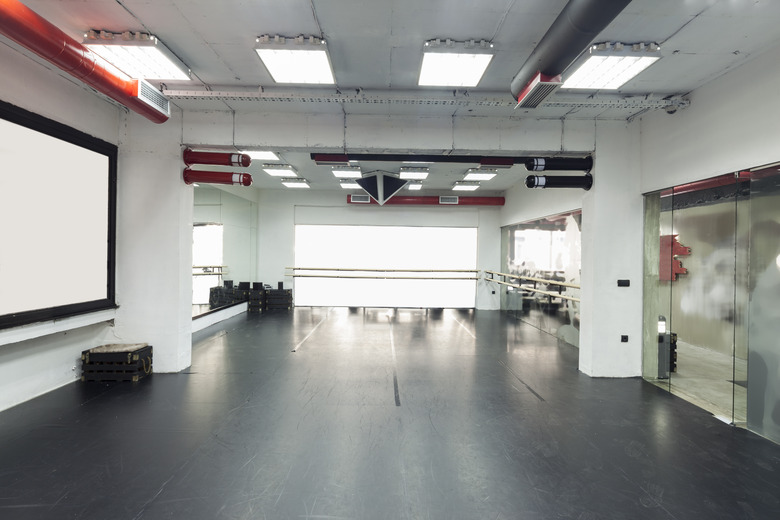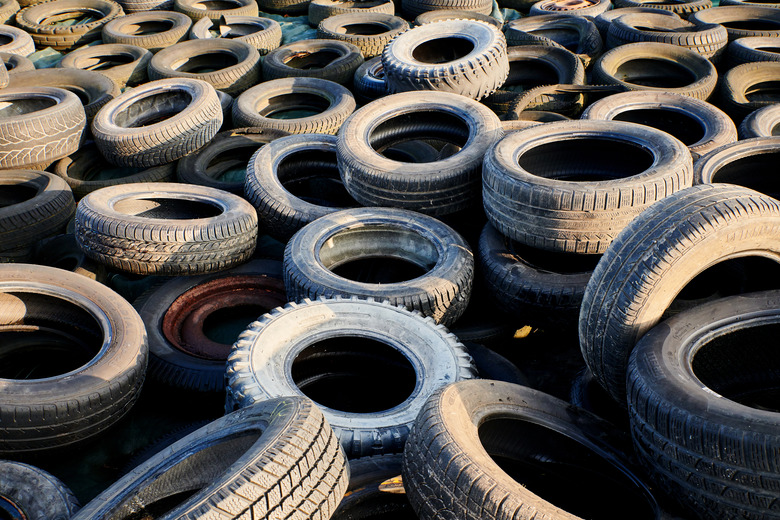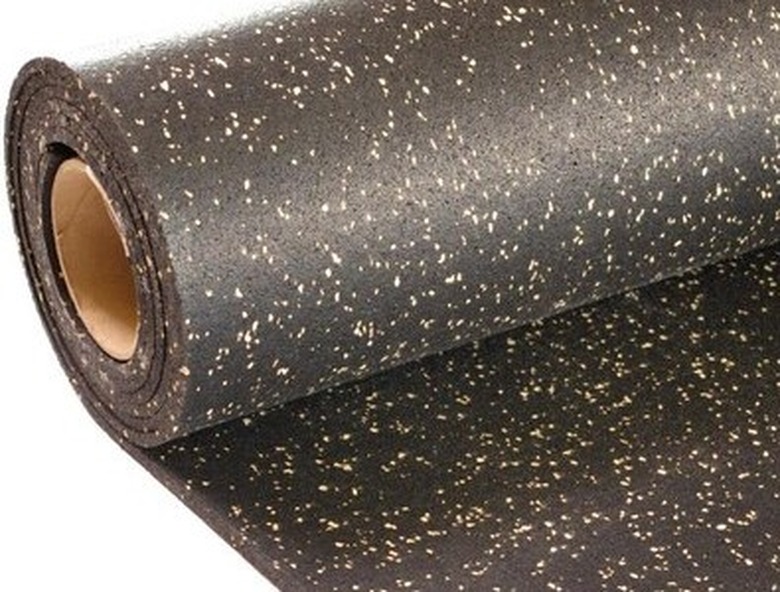Recycled Rubber Flooring: A Homeowner's Flooring Guide
Although it does not generate the same buzz that flooring products like luxury vinyl tile or laminate might, rubber flooring fills a niche that other materials can't. There are rubber flooring products that can be used both inside and outside, and many can take a level of abuse that would destroy other flooring materials. Some rubber flooring is considered environmentally friendly because it is made from recycled material.
Types of Rubber Flooring
Types of Rubber Flooring
There are three sources for rubber flooring products:
- Natural rubber is made from the sap of the rubber tree, which is a form of latex. Some people are allergic to latex, and outgassing from these products can cause a reaction. Rubber trees grow in Asia and South America, so there is an environmental price to pay in the transportation of the material to the U.S. market.
- Synthetic rubber is actually vinyl or polyvinyl chloride (PVC) that is formulated to have the look and feel of rubber. The products are durable and stain resistant. PVC is made from petroleum-based chemicals.
- Recycled rubber flooring is made from recycled car and truck tires. The U.S. Tire Manufacturers Association estimates that about 287 million tires are discarded every year. Of that number, about 81 percent are recycled in some way. About 25 percent of the recycled tires end up as a rubber-based product, such as flooring. Recycled rubber flooring is an environmentally friendly option. It is considered more durable than natural rubber, but it does not have the stain resistance of some synthetic products. Grease and oil and harsh solvents can stain recycled rubber flooring.
Uses for Rubber Flooring
Uses for Rubber Flooring
Many products combine the different types of rubber to create different looks and qualities. Recycled rubber is susceptible to grease stains, but natural rubber combined with synthetics can make the product grease and oil resistant, such as Tarkett's Johnsonite Defiant tile, which is formulated for garages.
Rubber floors have been used in commercial buildings such as schools and hospitals for years because the material is "resilient," or soft underfoot. It is easy to maintain, slip resistant and can help muffle sound. In homes, those qualities make it a good choice for playrooms, basement home gyms, exercise rooms and weight rooms as well as any room that needs a durable floor but requires a soft landing. The material is ideal for floor mats and runners to protect other flooring surfaces at entrance doors.
The typical recycled product has a black or gray base with colorants added to create a speckled look, such as the Confetti line from U.S Rubber and Mannington's Reset line of sports flooring. Because recycled rubber is a natural product, there will be some variations in color distribution and density. Some products are available in a limited number of colors.
Recycled Rubber Composition
Recycled Rubber Composition
There are people and organizations that question the use of recycled rubber material in homes because of off-gassing concerns. There is an odor when the products are first installed, but it dissipates after a while. However, old tires are made of some nasty components that can be harmful, such as toluene, formaldehyde and benzene. The worry is that they are not removed during the manufacturing process.
In a study on recycled tire flooring, the California Integrated Waste Management Board found that the products they tested that were labeled for interior use only did not release excessive amounts of volatile organic compounds (VOCs) or other chemicals. However, many exterior products did release high levels of VOCs, as did those labeled for both interior and exterior use. To be safe, choose interior products with Green Guard or FloorScore certification, which indicates the products meet standards for low-emitting products.
Rubber Flooring Products
Rubber Flooring Products
Rubber flooring is available as rubber tile or rolled sheets. The tiles are usually 12- or 24-inch squares, but there are products available that are up to 48-inches square. Tiles have either straight edges or tabbed edges. Thicknesses range from 1/4 inch up to 1 inch. Thicker tiles are often made of EVA foam with rubber backing. EVA is often called foam rubber, but it is not rubber — it is actually a plastic material. EVA foam tiles often come in bright colors and are imprinted with large numbers and letters for children's rooms.
Rubber rolls are usually 4-feet wide and up to 50-feet long. They range in thickness from 3/16 to 1/2 inch.
Rubber flooring is often marketed by its intended use. Thinner materials will be aimed at home use, while thicker products are designed for commercial gyms and martial arts studios. They can be a cost-effective option for high foot-traffic areas. Expect to pay about $2 to $9 per square foot for rubber flooring tiles and about $1 to $5 per square foot for rolled flooring. Add $1 to $4 per square foot for professional installation.
Rubber Flooring Installation
Rubber Flooring Installation
Most rubber flooring products can be installed over any hard-surface subfloor, such as plywood or concrete. Plank and strip flooring should be covered with a plywood underlayment. Some products can be installed over tile floors, but the shape of the tiles may telegraph through to the surface.
Rubber floor tiles with tabbed edges are a do-it-yourselfer's dream. The interlocking tiles snap together like pieces of a puzzle. Trim tiles as needed using a sharp utility knife guided by a straightedge. These floors can be left as floating floors or attached at the perimeter using double-sided tape.
The installation of rubber rolls is best left to professionals. These products are usually glued down using an approved adhesive.
Rubber Flooring Maintenance
Rubber Flooring Maintenance
Glued-down flooring requires a break-in period of at least three days. Avoid walking on the flooring so the adhesives have time to set properly. Rubber flooring needs to be cleaned regularly like any other type of flooring. Most floors require only daily sweeping or vacuuming and occasional cleaning with a damp mop. Clean up spills right away.
Work to remove stubborn stains using a soft brush and a manufacturer's approved cleaner. Most manufacturers recommend a neutral-pH cleaner for the floor. Unless approved by the manufacturer, avoid homemade cleaning solutions containing vinegar. Flooring manufacturers sell cleaning agents formulated for rubber flooring.
While the floors are water resistant, moisture can seep between seams. Water trapped under the rubber flooring could damage the subfloor. Some companies sell seam-sealing products to prevent moisture penetration. There are also sealers available for the entire floor that make them more resistant to stains and dirt. Check with the flooring manufacturer to determine which products are best for your floor.
References
- International Association of Certified Home Inspectors: Rubber Flooring Inspection
- CalRecycle: Tire-Derived Flooring Chemical Emissions Study and Indoor Reference Exposure Levels (iRELs)
- Rubber Flooring Inc.: Rubber Floor Tiles Buying Guide
- U.S. Tire Manufacturers Association: Closing the Gap: Why – and How – We're Striving for 100% Sustainable Use of Scrap Tires


